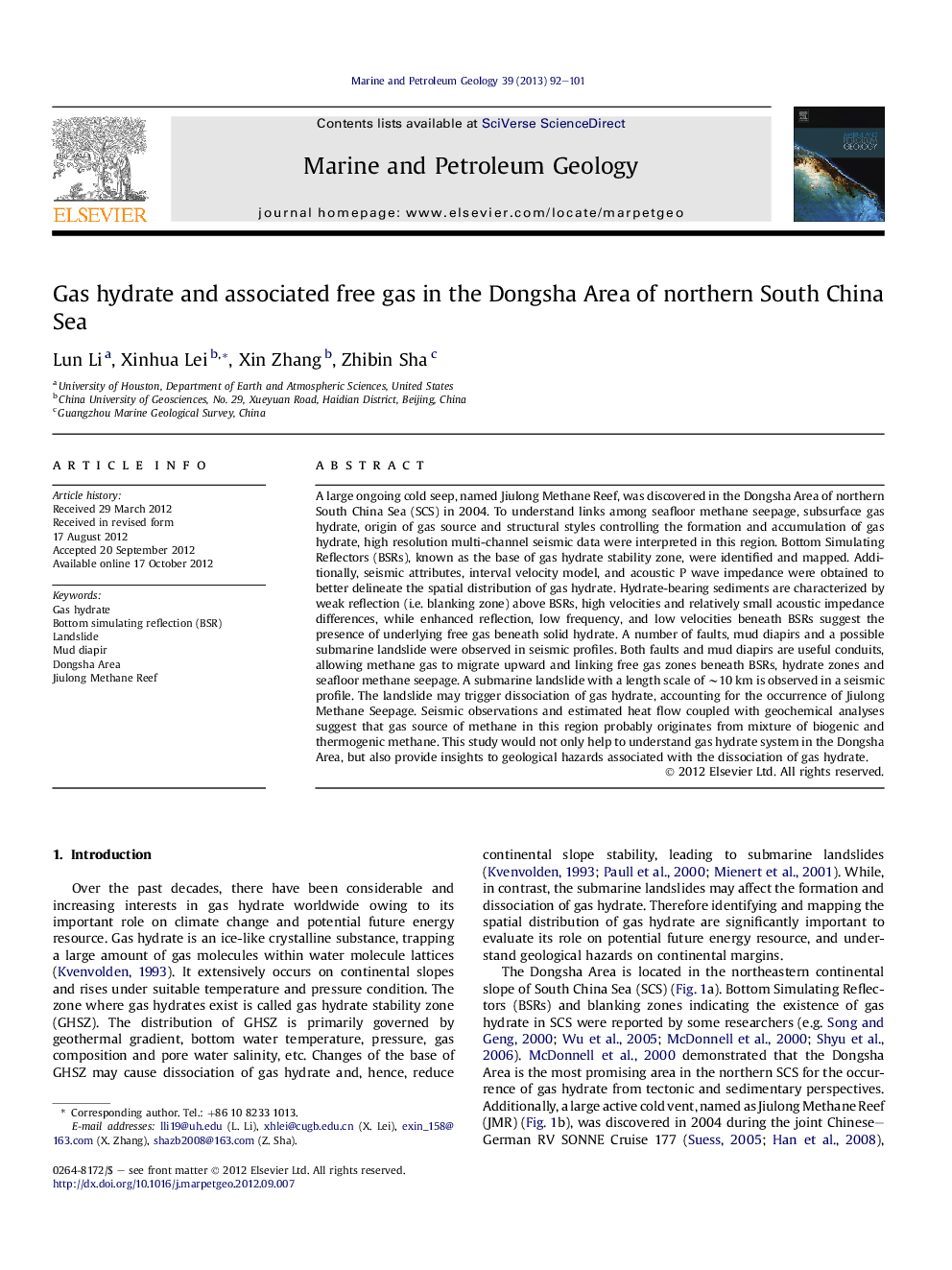| کد مقاله | کد نشریه | سال انتشار | مقاله انگلیسی | نسخه تمام متن |
|---|---|---|---|---|
| 4695894 | 1351641 | 2013 | 10 صفحه PDF | دانلود رایگان |

A large ongoing cold seep, named Jiulong Methane Reef, was discovered in the Dongsha Area of northern South China Sea (SCS) in 2004. To understand links among seafloor methane seepage, subsurface gas hydrate, origin of gas source and structural styles controlling the formation and accumulation of gas hydrate, high resolution multi-channel seismic data were interpreted in this region. Bottom Simulating Reflectors (BSRs), known as the base of gas hydrate stability zone, were identified and mapped. Additionally, seismic attributes, interval velocity model, and acoustic P wave impedance were obtained to better delineate the spatial distribution of gas hydrate. Hydrate-bearing sediments are characterized by weak reflection (i.e. blanking zone) above BSRs, high velocities and relatively small acoustic impedance differences, while enhanced reflection, low frequency, and low velocities beneath BSRs suggest the presence of underlying free gas beneath solid hydrate. A number of faults, mud diapirs and a possible submarine landslide were observed in seismic profiles. Both faults and mud diapirs are useful conduits, allowing methane gas to migrate upward and linking free gas zones beneath BSRs, hydrate zones and seafloor methane seepage. A submarine landslide with a length scale of ∼10 km is observed in a seismic profile. The landslide may trigger dissociation of gas hydrate, accounting for the occurrence of Jiulong Methane Seepage. Seismic observations and estimated heat flow coupled with geochemical analyses suggest that gas source of methane in this region probably originates from mixture of biogenic and thermogenic methane. This study would not only help to understand gas hydrate system in the Dongsha Area, but also provide insights to geological hazards associated with the dissociation of gas hydrate.
► We present various seismic evidences for the existence of gas hydrate.
► Fault and mud diapir are two key migration conduits for the formation of hydrate.
► Linkage among methane seepage, hydrate and origin of gas is investigated.
► Interaction between gas hydrate and submarine landslide is analyzed.
► This study would help to understand gas hydrate system in the northern SCS.
Journal: Marine and Petroleum Geology - Volume 39, Issue 1, January 2013, Pages 92–101